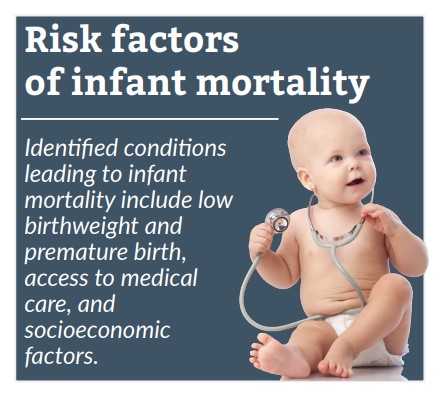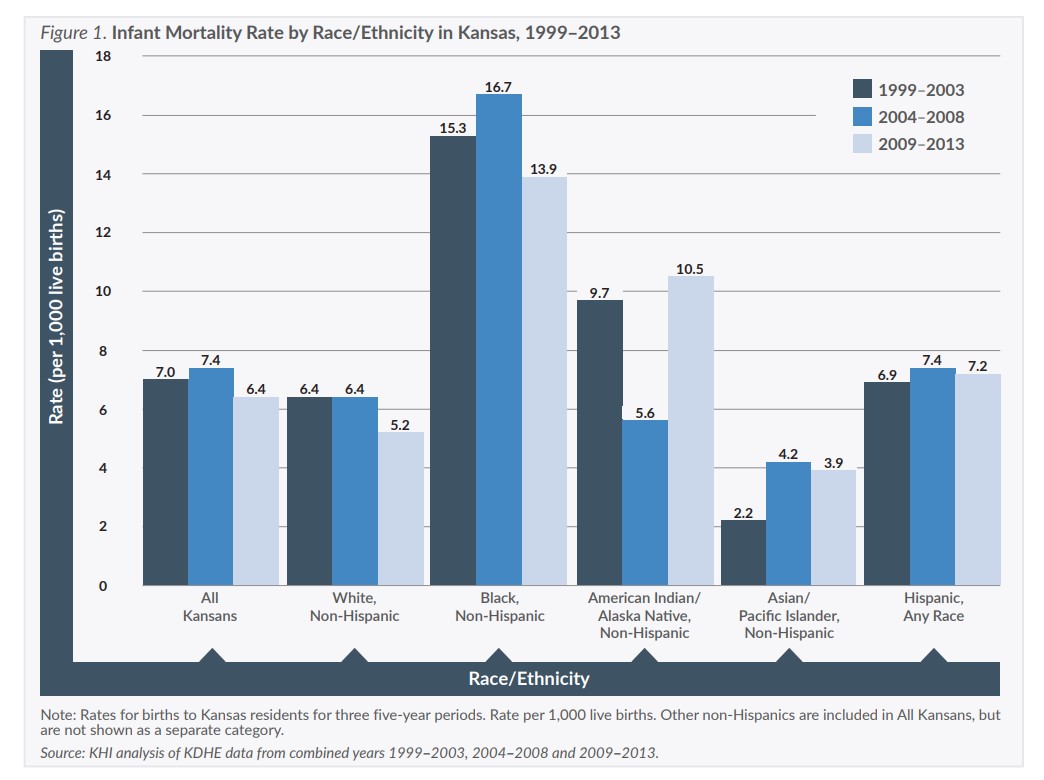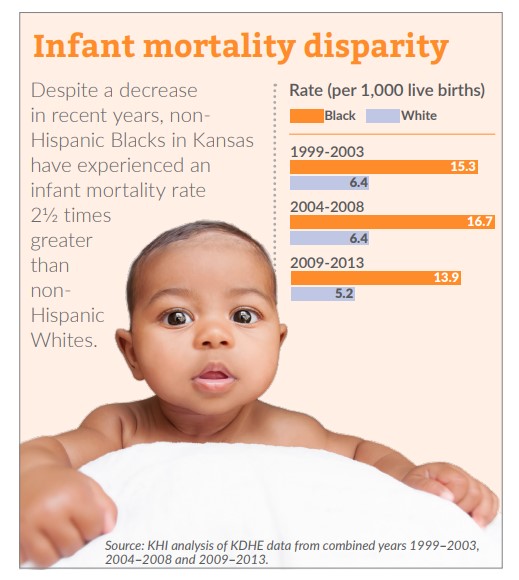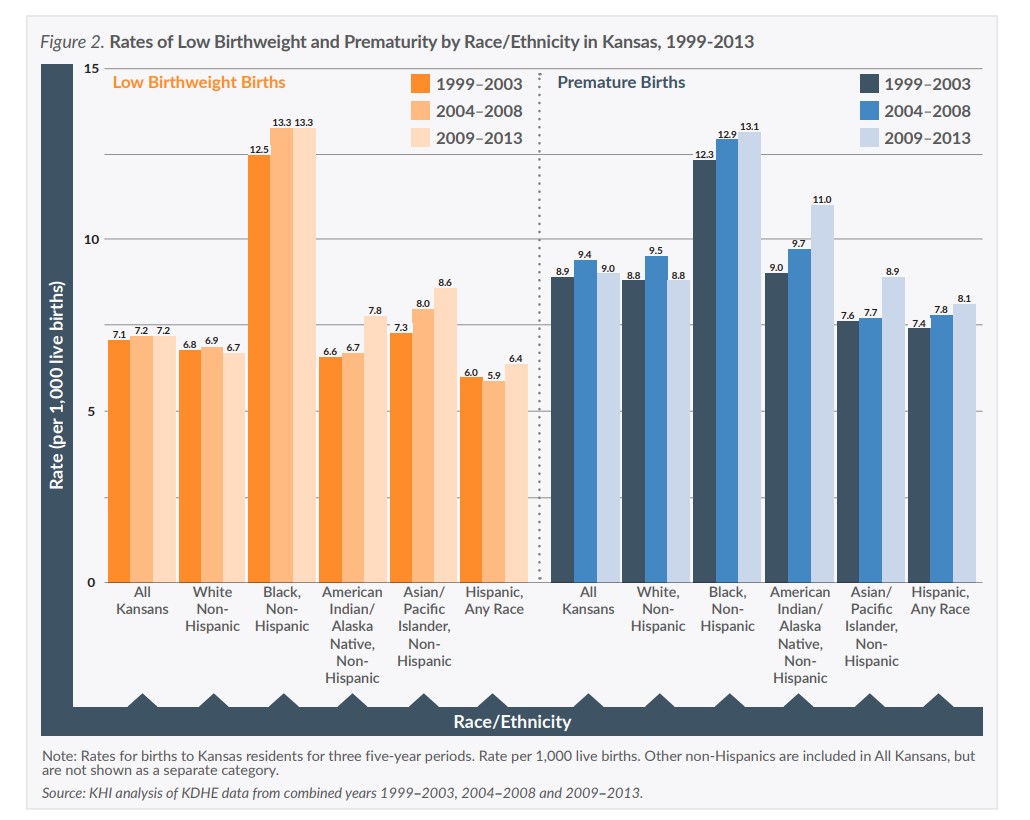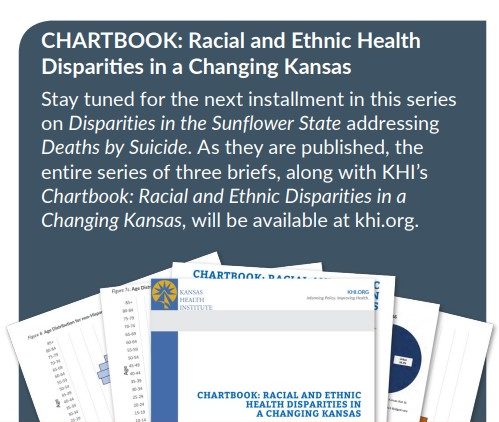Non-Hispanic Asians/Pacific Islanders in Kansas showed the greatest increase in infant mortality rates over the timeframe studied, though the increase could reflect the effect of small numbers for that group. Non-Hispanic Blacks showed the greatest decline in infant mortality rates, followed closely by non-Hispanic Whites, which is similar to national trends.
Over the three five-year time intervals studied, statewide infant mortality (7.0, 7.4 and 6.4 chronologically) was highest for the period 2004-2008. This holds true for all racial and ethnic minority groups, except for non-Hispanic American Indians/Alaska Natives, where low numbers of infant deaths and small population led to high variability in infant mortality rates.
Conditions Associated with Infant Mortality
Several factors contribute to infant mortality, and they vary among ethnic and racial groups. Identified conditions include issues related to birth, such as low birthweight and premature birth; factors related to access to medical care, such as insurance coverage and quality of prenatal care; and socioeconomic factors, including maternal/paternal education levels, employment status, poverty status or income level, and household composition.
Low Birthweight and Premature Birth
Low birthweight and premature birth are the leading causes of infant mortality in the United States. In Kansas, non-Hispanic Blacks had the highest rates of low birthweight across all three five-year time periods studied, ranging from 12.5-13.3 per 1,000 live births (Figure 2). Non-Hispanic Blacks also had the highest rates of prematurity across all three five-year time periods studied, ranging from 12.3-13.1 per 1,000 live births (Figure 2).
Prematurity or low birthweight are responsible for the highest percentage of infant deaths (31.2 percent) among non-Hispanic Blacks in Kansas. In comparison, deaths among non-Hispanic White infants are half as likely to be due to prematurity or low birthweight. Premature births and low birthweights have been identified as contributing factors to higher infant mortality among non-Hispanic Blacks nationwide as well. Higher rates of low birthweight have persisted among non-Hispanic Blacks, regardless of gains made in areas such as advanced education or higher socioeconomic standing. Underlying causes of this disparity are not well understood.

